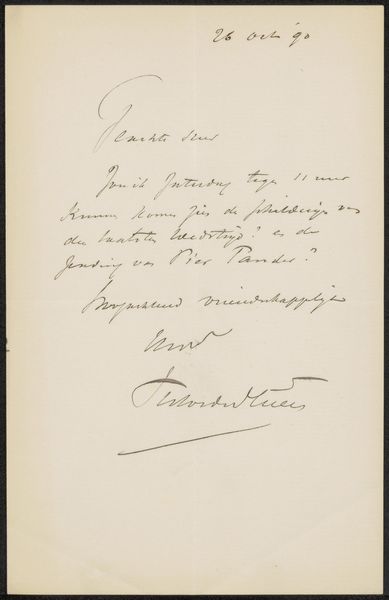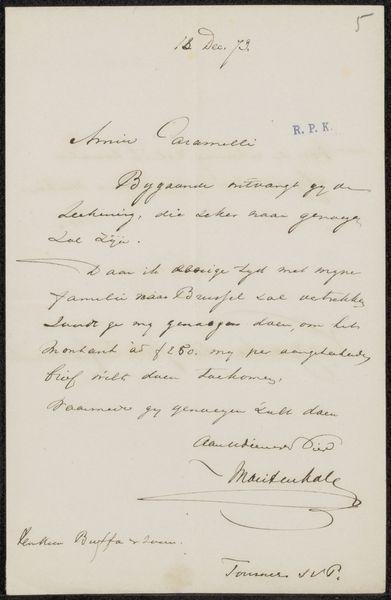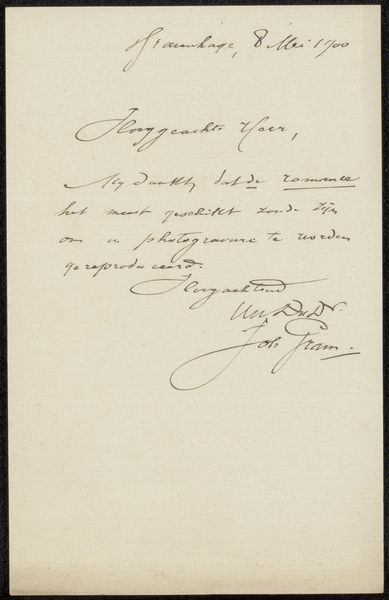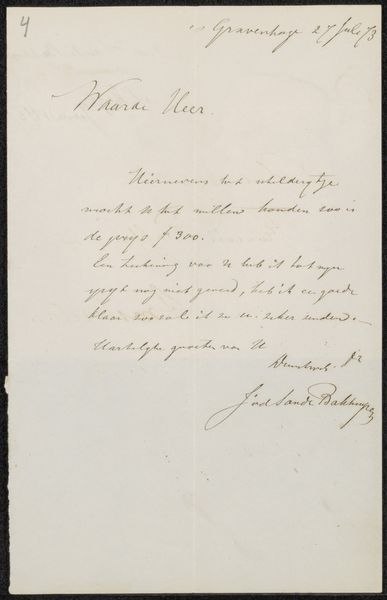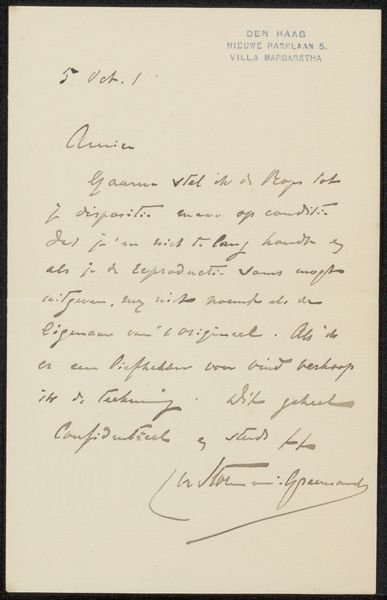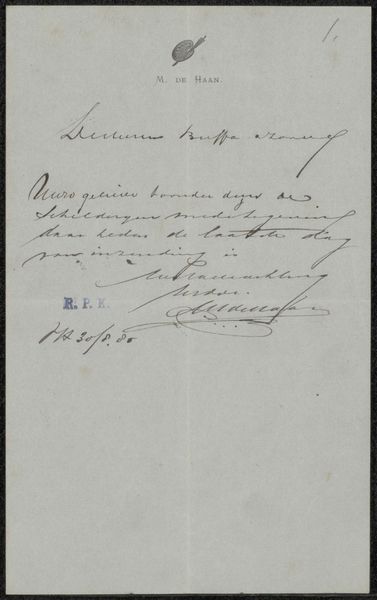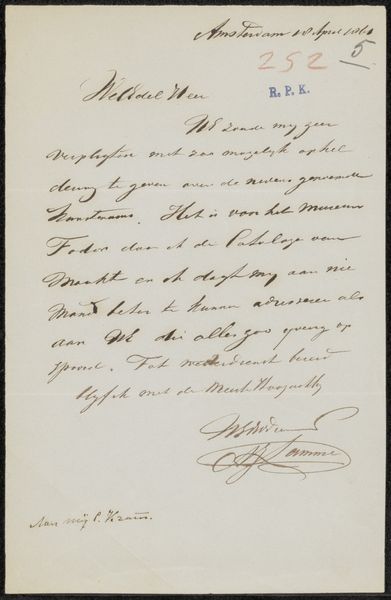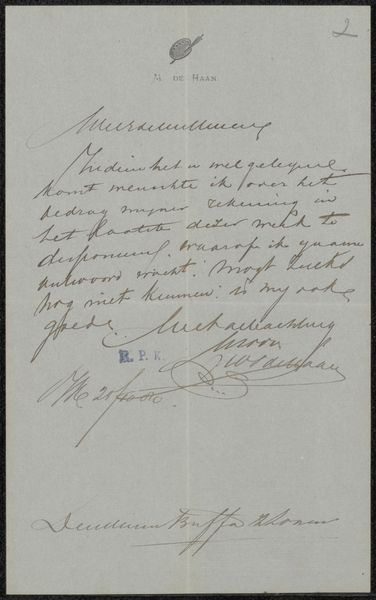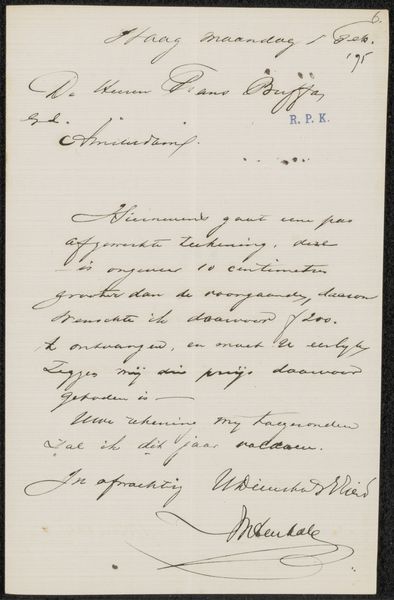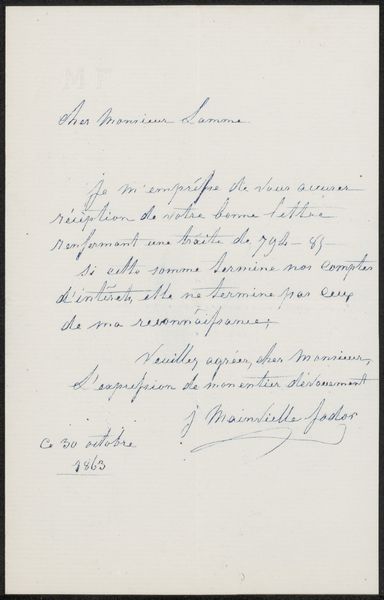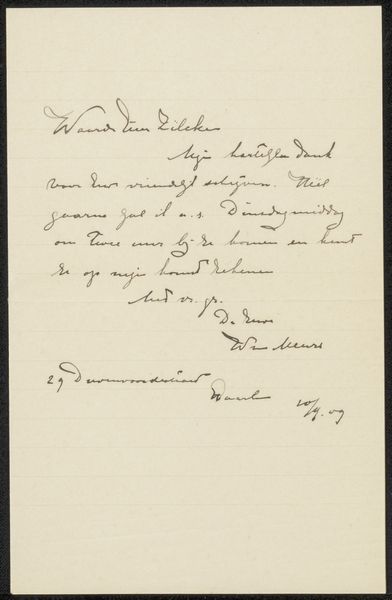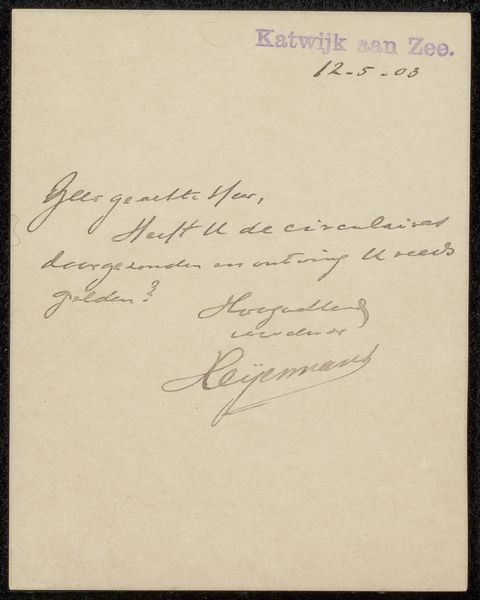
drawing, paper, ink
#
drawing
#
ink drawing
#
paper
#
ink
#
calligraphy
Copyright: Rijks Museum: Open Domain
Curator: This is "Brief aan August Allebé" (Letter to August Allebé), penned between 1853 and 1916 by jonkheer Victor Eugène Louis de Stuers. It’s an ink drawing on paper, currently held in the Rijksmuseum collection. Editor: Immediately, I'm struck by the fragility of the writing and paper—it evokes a sense of intimacy, almost like eavesdropping on a private exchange. There's also a strong element of care in each precisely placed stroke. Curator: Absolutely. The materiality speaks volumes here. Consider the specific type of ink used; its composition, viscosity and color influenced how de Stuers crafted each letter. Also, the type of paper available to him during that period would dictate the absorbency and texture. It influences the line work, you see? Editor: It's a deliberate aesthetic choice. The careful looping and graceful lines transform functional text into visual art. This was, of course, a time when literacy was often aligned with power structures. We need to consider that de Stuers belonged to a specific social stratum; a member of the Dutch nobility. How does that status inform this interaction, this correspondence? Curator: The letter’s purpose relates to his bureaucratic labor, particularly regarding regulations ('Reglement' in the text) and the Academy, so these considerations impacted availability of supplies like good ink and high quality paper. Think about that context, the production of luxury materials used by the upper classes, that also served governmental operations. Editor: Right, and the Academy—it likely represented access and privilege for some, and exclusion for others. Reading between these precisely etched lines, we can consider themes of belonging and social navigation. This communication probably reveals something about Allebé's and de Stuers' relative positions within those social structures too. It's fascinating to observe such a nuanced dynamic communicated via ink and paper. Curator: Considering its journey from sender to recipient, and now here in a museum—the paper itself has undergone a whole series of conservation efforts! Its materiality is not just intrinsic, but actively cared for by specialized labor. Editor: These nuances about materials and techniques open up many possibilities for exploring themes related to historical period, as well as access and distribution. Curator: Seeing how the act of writing and material create meaning for a historical period lets you examine a powerful encounter with this drawing!
Comments
No comments
Be the first to comment and join the conversation on the ultimate creative platform.
